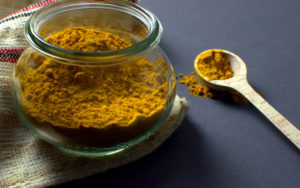7 Surprising Arthritis Facts You Should Know (Myths Busted!)
Written by TYE Medical on May 26th 2020
According to the laws of probability, you either suffer from arthritis or know several people who do. In the U.S., over 23% of all adults (about 54 million people) have arthritis. More surprisingly, 1 in 4 adults with the condition report having severe joint pain. Despite that so many suffer with arthritis, there’s a lot of misinformation and downright myths circulating about it.
We decided to separate fact from fiction. Our research found some surprising truths and busted several myths! After all, awareness goes a long way toward prevention and getting the early treatment you need.
1. Over 100 different joint problems fall under the category of arthritis.

You’ve likely heard of osteoarthritis and rheumatoid arthritis but that’s just the beginning. In fact, there are so many different types and related conditions that medical professionals divide them into two major categories – degenerative and inflammatory. Degenerative arthritis includes all types that are due to wear and tear on joints due to age and activity, which is how osteoarthritis is classified. The other category, inflammatory arthritis, involves inflammation around joints that causes actual damage. In these cases, the condition is driven by a chronic autoimmune disease that triggers your amped up immune system to attack healthy tissues in your body, including in your joints.
While osteoarthritis is the most common degenerative type, there are several common forms of inflammatory arthritis, such as:
2. Many types of arthritis are preventable.
While it’s true that there’s no cure, there are things you can do now to prevent the disease or slow it down. Unless you found the fountain of youth, you can’t stop aging. However, you can adjust your lifestyle to make the aging process easier on your joints. For arthritis prevention, your main goals are to:
- prevent inflammation
- protect yourself from injury
- strengthen surrounding muscles
- stay flexible
Here are tips to achieve those goals:
Maintain a healthy weight. Extra weight puts a lot of stress and pressure on your joints, breaking them down at an accelerated rate. Just 10 extra pounds increases the pressure on your knees by up to 30 to 60 pounds!
Eat more fish. Specifically, eat more fish rich in omega-3 fatty acids like salmon, trout, mackerel, and sardines. Twice a week should do the trick. Omega-3s are believed to reduce inflammation within the body, which makes them a great ally in the fight against inflammatory arthritis conditions.
Exercise. Many people believe exercise is bad for your joints, especially if you have arthritis. The truth? Exercise is great for preventing the condition and for easing symptoms you already have. First, it helps you lose or maintain weight, which is extremely important for joint health and comfort. But it also helps to strengthen the muscles surrounding your joints, which keeps them stable, protects them from injury, and even reduces pain in the long run (even if it hurts while you’re doing it). Experts recommend alternating between aerobic activities like walking or swimming and strengthening exercises. And don’t forget to stretch for increased flexibility or try some yoga. If you have rheumatoid arthritis Dr. Weil recommends swimming for your aerobic workout.
Be careful with yourself. At one point, most of us were young and stupid. These days, we’re a little wiser. So, be sure to wear the appropriate safety gear when you’re being active, and by all means – don’t do anything to crazy. Damaged cartilage wears out much more quickly!
Talk to your doctor. If you develop symptoms, it’s best not to ignore them. You’ll want to get ahead of it and determine which category of arthritis you have. It’s always best to start treatments early!
3. It can strike at almost any age.
According to the CDC, 60% of adults with arthritis are ages 18 to 64, which means you can’t just assume you’re “too young” when experiencing symptoms. In fact, inflammatory arthritis often surfaces during your 30s, 40s, or 50s. If you experience joint pain, stiffness, or swelling that continues for weeks, don’t ignore it because you’re 35. Follow up with your doctor to determine the cause.
Unfortunately, even juvenile arthritis isn’t unheard of. Almost 300,000 children and teens suffer from pediatric rheumatic disease, also known as juvenile arthritis (JA). Many conditions fall into this category and most of them are autoimmune related. Researchers don’t know the precise cause of JA but suspect a type of virus, bacterial, or other external triggers.
4. Knuckle cracking has nothing to do with getting arthritis.
Contrary to what grandma told you, there’s no real evidence linking knuckle cracking to arthritis. But don’t return to this habit just yet, because it’s still not recommended.
So here’s what’s happening when you start cracking: as you bend your fingers backward gas bubbles form in the joint fluid due to the change in pressure. Researchers believe the “popping” sound comes either from the formation or from the popping of the gas bubbles. Either way, it’s not good. While there’s no notable evidence it’s directly linked to arthritis, researchers have found that some chronic knuckle crackers might have more swelling in their hands, a weaker grip, or cartilage changes in their joints. The latter could put you at a higher risk for developing osteoarthritis, but again, there’s no consistent evidence of this.
In short, it’s probably best to give up the habit – but don’t think you’ve given yourself arthritis because you impulsively cracked your knuckles.
5. The right dosage of glucosamine chondroitin can relieve joint pain.
If you have arthritis, you’ve probably heard conflicting statements about the benefits of glucosamine chondroitin. All things considered, the evidence suggests this combination of supplements is worth taking to help with moderate to severe osteoarthritis pain. But it’s only effective at specific dosages, namely1,500 mg of glucosamine and1,200 mg of chondroitin daily.
Your body naturally produces glucosamine and chondroitin, which are part of the cartilage tissue that cushions your joints. By taking it in supplement form, you’re helping your body reduce inflammation and collagen breakdown within joints. Since osteoarthritis is due to a lack of cartilage regeneration, glucosamine chondroitin supplements seem to be more effective in easing symptoms than relying only on what the body produces.
Note: Supplemental glucosamine is frequently derived from shellfish, so avoid these products if you have a shellfish allergy!
6. Rheumatoid arthritis can affect more than just your joints.
This autoimmune condition affects joints throughout the body, but because it’s considered a systemic disease, it can also involve many other body parts. Along with joint problems, about 40% of patients also experience symptoms involving their skin, eyes, mouth, lungs, bones, heart, blood vessels, liver, kidneys, and even blood.
Symptoms often come and go and are marked by flare-ups, time when they become notably worse.
7. You can ease symptoms with inflammation-fighting foods.

Image courtesy of https://www.favorece.net/
Not only do foods containing omega-3s help prevent arthritis, but they can also help to fight existing inflammation and ease painful symptoms. But it takes more than just eating salmon or trout to see the benefits. Relief requires a dietary makeover that looks something like this:
Go low Protein. Avoid high amounts of protein and opt for a low protein diet of 20-50 grams per day or 4-8% of your daily calories. If you have other preexisting conditions, consult with your doctor before making this change.
Nix the dairy? The internet is flooded with conflicting information about dairy and inflammation. Dairy is big business, so it’s tough to know what’s valid and what’s propaganda. Many wellness experts and integrative medicine doctors like Dr. Andrew Weil still believe dairy promotes inflammation that causes or triggers arthritis and a host of other health conditions. For details, check out Dr. Weil’s article, Why Not Drink Milk?
Avoid sugar. Sugar is known to causes inflammation and has even been linked to cancer and rheumatoid arthritis. One of the best things you can do to maintain health long-term is reduce your sugar intake as much as possible – and don’t drink sugary soda ever!
Use oils selectively. Avoid vegetable shortening, margarine, and all partially hydrogenated oils, all animal fats, and trans fats. Also exclude coconut oil, corn oil, cottonseed oil, palm oil, safflower oil, sunflower, and soybean oil. In their processed state, they have inflammatory properties. Instead, choose good oils like extra virgin olive, expeller-pressed canola, flaxseed, walnut, or hempseed oils.
Try a fish oil supplement. Since you’re trying to keep your protein levels low, consider getting your omega-3s in supplement form. Choose a supplement containing 700-1,000 mg of EPA and 200-500 mg of DHA daily.
Embrace turmeric. It has anti-inflammatory properties that make it a fearsome ally in the fight against arthritis. So don’t be afraid to indulge your craving for Indian cuisine. Turmeric contains dozens of anti-inflammatory compounds as well as six different inhibitors that block inflammation, pain, and swelling. While you’re encouraged to add this spice to your diet, it’s probably not enough to make a noticeable impact. In addition, try drinking turmeric tea or taking it in supplement form at dosages of 400-600 mg three time a day (or as directed). Select products that are standardized for 95% curcuminoids and contain piperine or black pepper extract for better absorption.
Eat fruits and veggies. They’re rich in phytonutrients that have antioxidant and anti-inflammatory properties. What does this mean for you? Eating 7-9 servings of produce each can increase health and even promote healing.
If you’re very dedicated, you might even consider juicing vegetables several times a day (between meals) for extreme phytonutrient healing. Add the juice of one quarter or half a lemon for a tangy flavor. Just remember, that juicing shouldn’t replace the recommended amount of whole fruits or vegetables you should have in a day. Additionally, you should still follow your doctor’s prescribed medical treatments.
For more information on diet and arthritis, check out Dr. Andrew Weil’s Anti-Inflammatory Food Pyramid.
Arthritis Complicates Incontinence, So You Need Premium Products

Severe arthritis makes bathroom trips more challenging and painful. Sometimes it’s due to mobility issues, and other times the loss of dexterity and aching joints in the hands and knees delay your toilet time.
To alleviate stress and discomfort, find a highly absorbent product to keep you clean and dry throughout the day. LivDry offers several stages of absorbency to help you find the right incontinence underwear for you. For moderate to heavy leaks, try our top-selling protective underwear and get discreet, free shipping on all orders!

